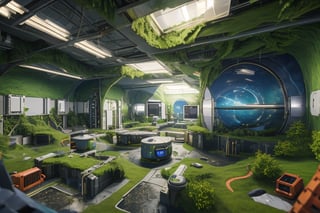Mahi
Published:
Non-gravity Working Areas will be arranged to enable astronauts to work comfortably. The space campus must be self-sufficient to meet its basic needs such as energy production, water supply, oxygen production and waste management. Flexible Modular Design: The space campus should be easily expandable or reconfigurable according to future needs. Modular design facilitates the integration of new technologies and increases the adaptability of the space campus. Green Spaces and Recreation Areas: Green spaces and recreation areas are important to support the physical and mental health of astronauts. Plant growing facilities and exercise areas reduce stress and boost astronauts' morale during long-duration missions. Communication and Transportation Infrastructure: The space campus must have a strong communication infrastructure that will provide continuous communication with the Earth. In addition, a suitable transportation infrastructure is necessary to ensure regular transportation with the world. Security and Emergency Preparedness: The space campus should be equipped with security measures and emergency plans against possible hazards. It is vital to have the necessary equipment and procedures for emergencies such as fire, loss of pressure, and air leaks. Scientific Research and Innovation Center: The space campus should be a center for research and developing innovative solutions in the field of space sciences and technologies. Scientific laboratories, experimental equipment and data analysis systems contribute to the advancement of space exploration. Multiple Uses: The space settlement should be usable not only for scientific research but also for different purposes such as commercial activities, tourism and entertainment. This makes space more accessible to humanity. The use of recycled materials, energy efficiency and environmentally friendly practices contribute to the long-term preservation of space. spaceships planets with lots of lights
Comments




